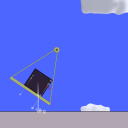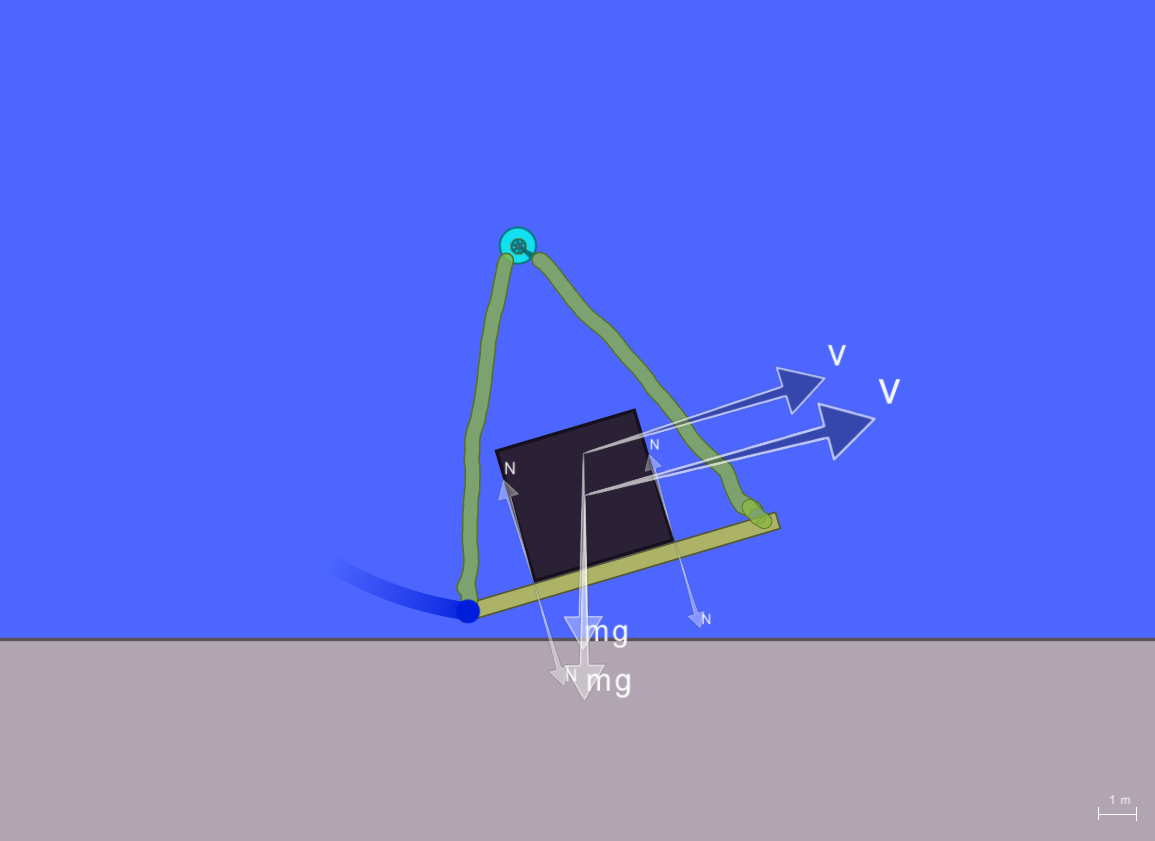Swing
From Algodoo
Swing
| Language: | English |
|---|---|
| Description: | Swing motion is a good system for examining the concepts of force and motion. Several forces interplay. In reality the forces can be experienced, e.g., as the tickling sensation of acceleration under gravity and the pressure from the swing on the body. Velocity can be experienced through the air drag. This lesson allows the students to visualize the forces that are present in a swing and understand their relation to the swinging motion. |
| Target: | Key Stage 2 |
| Category: | Demonstration, Exercise |
| Discipline: | Static forces, Dynamic forces, Gravity, Motion |
| Learning objectives: |
|
| In class: | Discuss different swing designs. Discuss what makes a swing start to move and what that motion looks like. When is the velocity at maximum speed? What is the velocity at the turn points? What makes the swing turn?
Make a simple drawing of a swing carrying a student (modelled as a box, say) sitting on a seat. Let the students create the scene in Algodoo. Encourage the students to follow the procedure Create – Predict – Interact – Evaluate. Study the forces by visualizing them as arrows. Study also the velocity visualized as arrows. Observe that gravity is present as a constant force but that the force between the seat and the student varies. Observe also that there is a force from the student to the seat – this is a contact force we experience as pressure from the seat. Connect to the real experience of swinging. Observe how the velocity changes with time. Ask the students what would happen if there was no gravity. Test this by setting gravity to zero. |
Create a scene
Make a prediction
When is the velocity at maximum value? Is the velocity ever zero? When is the contact force from swing to body at it its maximum. Why? Is the contact force ever zero?
What happens if there is no gravity?
Run/Interact





